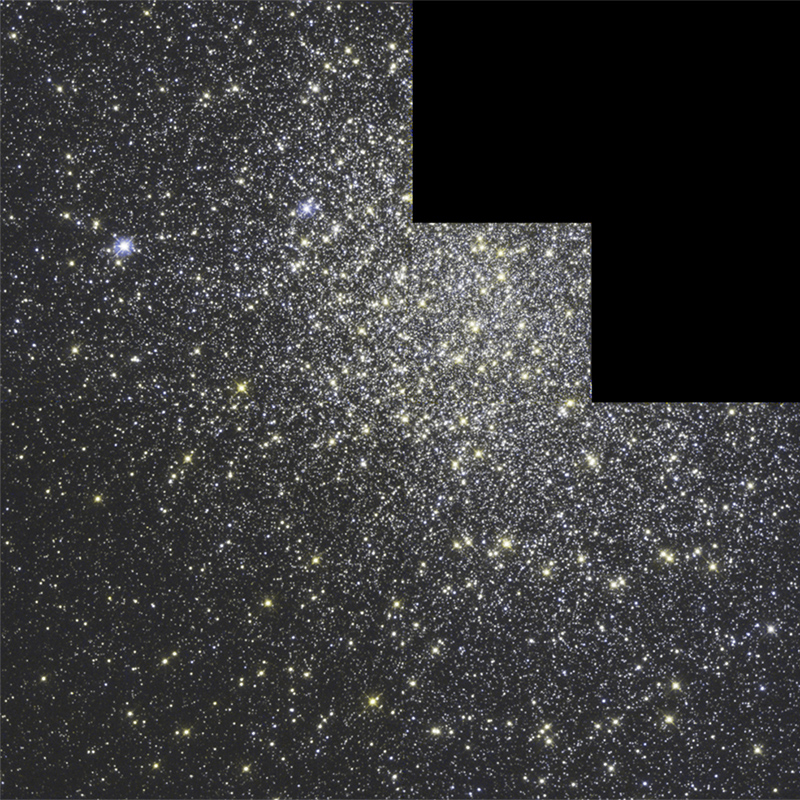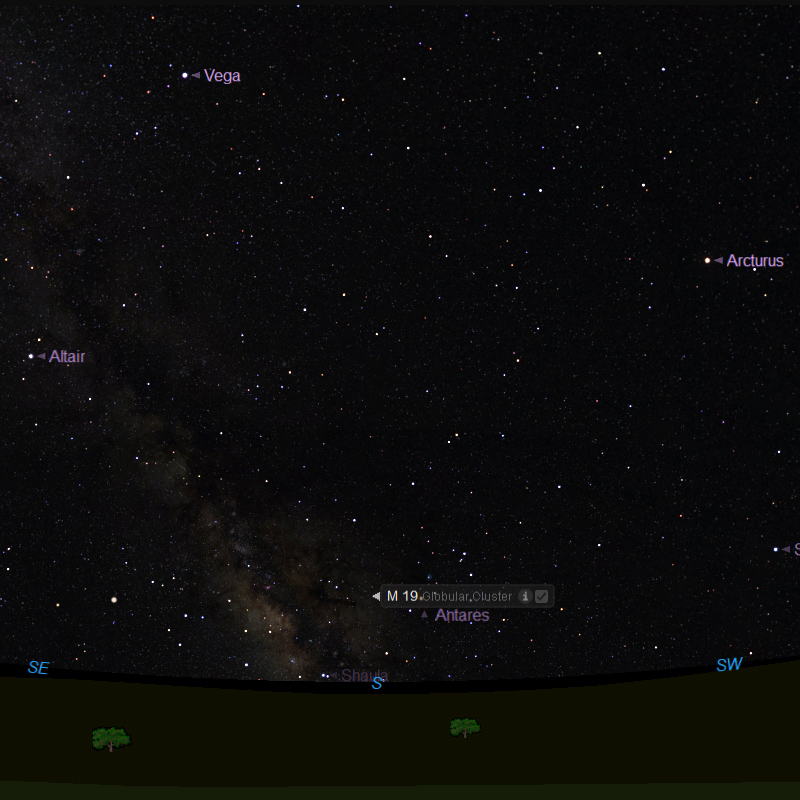M19

Credits: NASA, ESA, STScI and I. King (University of California – Berkeley)
M19 was discovered by Charles Messier in 1764. The cluster is located 28,500 light-years from Earth in the constellation Ophiuchus and is most easily observed during July.
It has an apparent magnitude of 7.7 and can be spotted through a pair of binoculars, though it will only appear as a faint patch of light. Large telescopes will resolve M19’s individual stars.
The stars in globular clusters orbit about a common center of gravity, so these clusters are usually spherical. Some globular clusters, like M19, have a slightly elongated shape.
This cluster is only 6,500 light-years away from the center of our Milky Way galaxy, so the gravity and tidal forces from the massive galactic center could be causing M19 to stretch out.
This Hubble image of M19 was created using observations of both visible and ultraviolet light. The image’s stair-step appearance results from the design of the camera used to take the exposures.
The camera consisted of four light detectors, one of which provided a higher resolution but had a smaller field of view than the other three.
Because the detector with the higher resolution did not cover as much area as the others, black regions were left when the image from all four detectors were combined into one picture.
Facts about M19 by Keith Turnecliff
M19 (also designated NGC 6273) is a globular cluster in the constellation Ophiuchus.
It was discovered by Charles Messier on June 5, 1764 and added to his catalogue of comet-like objects that same year.
It was resolved into individual stars by William Herschel in 1784. His son, John Herschel, described it as "a superb cluster resolvable into countless stars".
The cluster is located 4.5° WSW of Theta Ophiuchi and is just visible as a fuzzy point of light using 50 mm (2.0 in) binoculars.
Using a telescope with a 25.4 cm (10.0 in) aperture, the cluster shows an oval appearance with a 3′ × 4′ core and a 5′ × 7′ halo.
M19 is one of the most oblate of the known globular clusters. This flattening may not accurately reflect the physical shape of the cluster because the emitted light is
being strongly absorbed along the eastern edge. This is the result of extinction caused by intervening gas and dust. When viewed in the infrared, the cluster shows almost no flattening.

Best Viewed with resolution 1980 x 1020.
Credits: Image courtesy of Starry Night Pro Plus 8, researched and implemented by Keith Turnecliff.